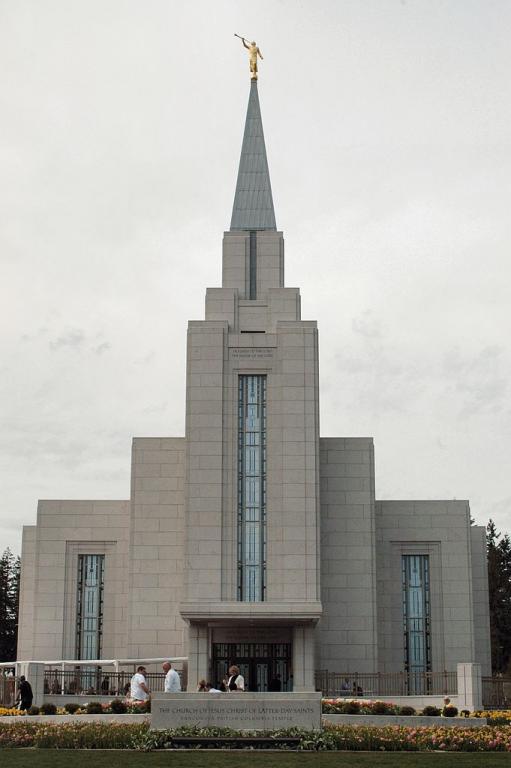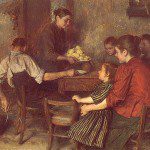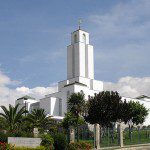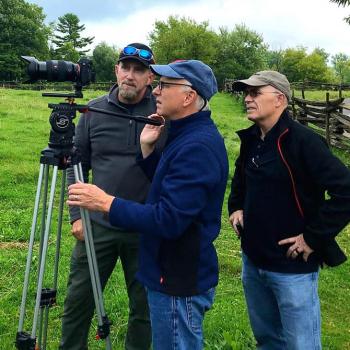
Yesterday, I read Barry R. Bickmore, ““Show Them unto No Man”: Part 1. Esoteric Teachings and the Problem of Early Latter-day Saint Doctrinal History,” in BYU Studies 62/1 (2023): 29-60. Dr. Bickmore holds a Ph.D. from Virginia Tech (more formally, from the Virginia Polytechnic Institute and State University). He is a professor of geological sciences at Brigham Young University, where he specializes in mineralogy, petrology, hydrogeology, environmental geology, and geochemistry. He has, however, also had a longstanding and productive interest in the doctrinal history of ancient Christianity and its relevance to the Restoration, as demonstrated by his valuable book Restoring the Ancient Church: Joseph Smith & Early Christianity, which was originally published in 1999 and which was republished in 2013.
I think that ““Show Them unto No Man” is an extraordinarily important article, and I commend it to the attention of anyone interested in the relationship between Latter-day Saint teachings and those of the ancient Christians — but also, and even more particularly, to those who may have been bothered by the attempts of such writers as Dan Vogel and Charles Harrell to chronicle and account for the development of early Latter-day Saint doctrine. His insightful treatment of the Book of Mormon and the Book of Moses as a virtually contemporaneous pair of exoteric-esoteric texts, and of using the latter (where applicable) to interpret the former, is very helpful, as are his specific discussions of such subjects as alleged Book of Mormon “modalism,” early Latter-day Saint monotheism, and the notion of the pre-mortal existence of human spirits.
I share with you here just three of the many passages that I marked during my quick reading of the article. I do not pretend that these adequately represent his arguments or even all of his chief points. They’re not intended to do so, and they’re certainly not intended to take the place of reading Professor Bickmore’s article itself. Indeed, there are several major sub-themes of his essay that I have marked for my own purposes but which I will not so much as mention here:
When most people read historical writing, they assume what they are reading is something very close to what actually happened. It is now generally admitted among historians, however, that what ultimately makes it onto the page incorporates a healthy dose of the author’s imagination and prejudice. Certainly, historical writing incorporates what we might call “facts” (for example, documentary evidence), but the author connects these widely spaced dots with lines formed from choices about which sources are relevant to the subject, their relative trustworthiness, the meaning of the words, and so on. “The problem with historical narrative, . . .” says Georg Iggers, “is that, while it proceeds from empirically validated facts or events, it necessarily requires imaginative steps to place them in a coherent story.”2
The problem of bias becomes especially apparent when dealing with polarizing subjects like religious doctrinal history. (29-30)
In this next passage, Professor Bickmore sets forth his thesis, which he will then illustrate through specific examples and cases:
In this essay, I argue that the cost of ignoring esotericism when reconstructing doctrinal history is very steep indeed. To demonstrate this point, I present some examples of early Latter-day Saint doctrinal statements that, upon reflection, appear difficult to interpret correctly without referring to Joseph Smith’s documented practice of esotericism. In these cases, we actually have both the exoteric and esoteric versions of Smith’s early teaching. Among Joseph Smith’s earliest writings are the Book of Mormon and the book of Moses, a pair of documents unquestionably produced by Smith near-contemporaneously and respectively claiming to expound exoteric and esoteric teachings.
I also show that a number of historians have nevertheless proposed pathways of early Latter-day Saint doctrinal change that are demonstrably implausible, precisely because they have misunderstood the exoteric-esoteric relationship between these documents, and because they have too often refused to even consider the possibility that Joseph Smith was working from a sophisticated, and perhaps even successful, plan to restore legitimately primitive aspects of early Christianity. No matter what the source of their bias, it is clear that these historians have made very serious mistakes of interpretation, with the result that they present early Church doctrinal history as much more disjointed than it actually was. (32-33)
And here are the final lines of his conclusion:
[T]he case of early Restoration doctrinal history should serve as a caution to historians who want to assume they can successfully reconstruct the doctrinal history of religious groups that explicitly claimed to employ esotericism. If, even when the esoteric teachings are known, historians can badly misinterpret the content of the doctrines themselves, it is virtually guaranteed that this will happen in cases where the esoteric teachings are incompletely known. (60)
Again, I cannot overpraise this article. I regard it as very important. It probably won’t be for everybody, but I personally think that it has done a very great deal of useful work. I will be re-reading it much more carefully than I read it through the first time.

(Wikimedia Commons public domain image)
But, happily for some, there is darkness to be relished and evil at which to be gratifyingly indignant! I speak, of course, of the inexhaustible Christopher Hitchens Memorial “How Religion Poisons Everything” File™, from which I draw a quintet of horrifying specimens:
- “The Church of Jesus Christ Assists with New Malaria Vaccinations in Africa: Nearly 40,000 children will receive the vaccine”
- “Numbers of JustServe Projects, Users, Languages and More in 2022: Many volunteers and organizations used the JustServe website and app in 2022”
- “How the Church’s JustServe initiative offers a unifying remedy for the divisive ills of the day”
- “Latter-day Saints in Hemet, California, honored for service to the community: Members work to ‘make Hemet heaven again’ with JustServe projects and then #LightTheWorld in town Christmas parade”
- “Afghanistan Refugee Finds New Hope for the Future From the Humanitarian Center: Maryam Akbari, who came to the U.S. with only a few of her family members, is furthering her education”
Posted from Victoria, British Columbia













